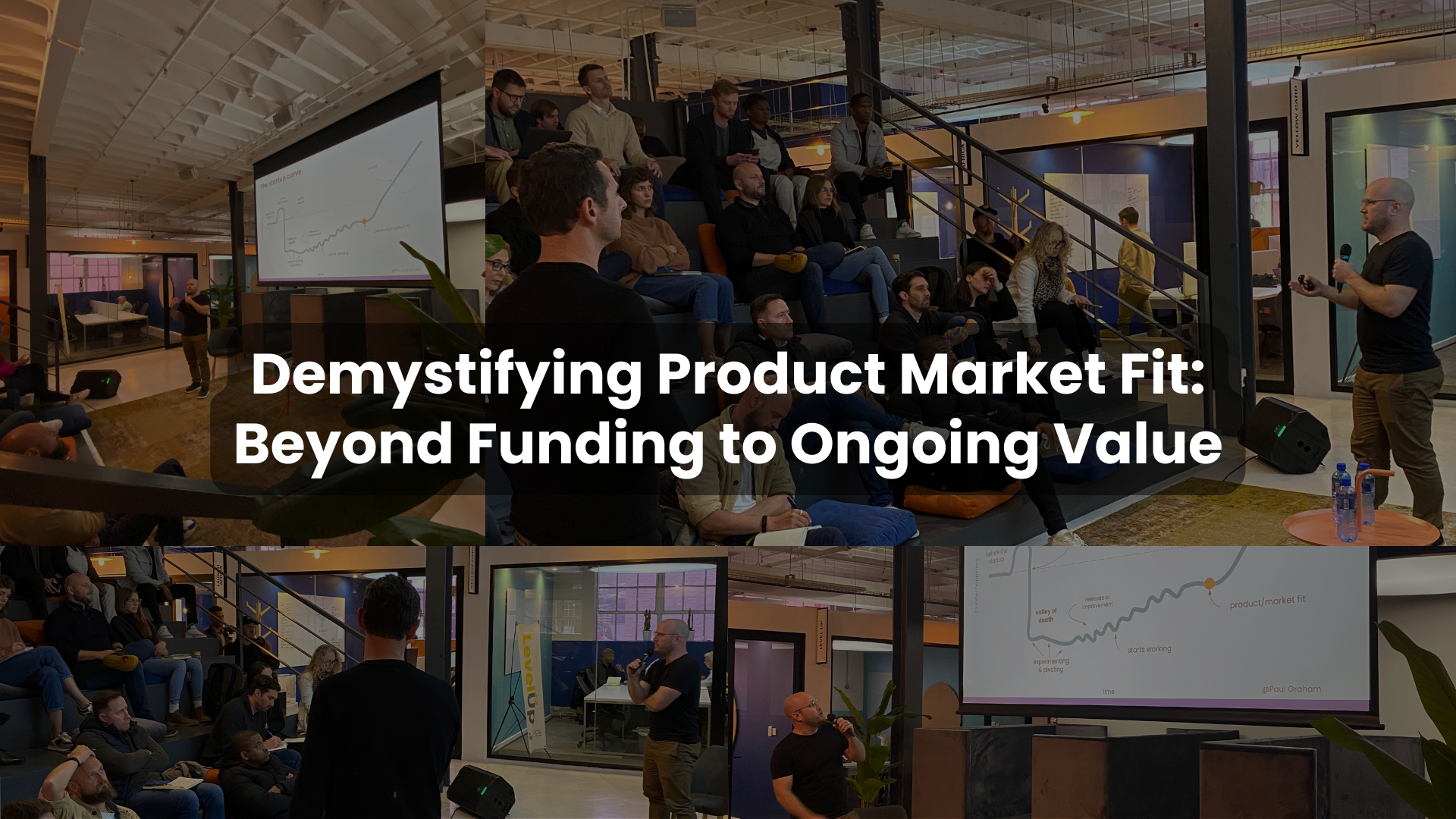
11 Jul Demystifying Product Market Fit: Beyond Funding to Ongoing Value
In the fast-paced world of startups and entrepreneurship, one term that often dominates conversations is “product market fit” (PMF). Many entrepreneurs and investors see it as the holy grail; the moment when a product aligns perfectly with its target market, resulting in exponential growth and financial success. However, the recent event at Innovation City featuring Roger Norton, Chief Product Officer at OkHi, and Steven Waidelich, Head of Growth at Founders Factory Africa, shed light on the real essence of PMF: It’s not just about the money, but the ongoing value entrepreneurs provide to their clients.
Defining Success in Product Market Fit
One of the core questions surrounding PMF is how to define its success. While there are many definitions out there, most are unmeasurable and unactionable. The only measurable aspect of PMF lies in user retention. If users keep coming back, it’s a strong indication that you’re building something people genuinely want.
The Importance of User Retention
User retention encompasses three key metrics: double-digit user growth, meaningful engagement, and at least 20-40% retention. These metrics reflect a product that not only attracts users but also provides ongoing value, keeping them hooked and engaged.
Metrics for Measuring Engagement
To gauge meaningful engagement, entrepreneurs need to focus on daily usage and the depth of usage. How can you measure if users are receiving value from your product? By assessing what percentage of monthly active users are also daily and weekly users, which will help determine the stickiness of your product. If more than 50% fall into this category, it indicates a product that delivers consistent value and keeps users coming back.
The Pitfalls of Misinterpreting Metrics
While metrics such as paid acquisition may initially seem like positive indicators, they can be misleading. High churn rates and low retention levels overshadow the allure of customer acquisition. Instead, entrepreneurs should pay attention to the viral coefficient, which signifies customers’ willingness to spread the word about your product, indicating their delight and satisfaction.
Going Beyond Transactions: Hooks and Value Creation
To truly achieve PMF, businesses must incorporate hooks that keep users engaged beyond the primary transaction. This involves identifying inflection points where the mechanics of the business become more robust and exploring how to increase stickiness. By aligning the product, market, and customer segment, entrepreneurs can ensure that their inflection points make sense and contribute to sustained growth.
Beyond Funding: Serving Customers and Creating Value
One crucial lesson highlighted by the event speakers is the importance of focusing on real fundamentals rather than investor fundamentals. While funding can be a temporary measure of success, it doesn’t guarantee PMF. Entrepreneurs should concentrate on understanding and serving their customers, delivering ongoing value that keeps them loyal and satisfied.
Measuring Success with the Right Tools
To effectively track and measure metrics for PMF, it is recommended to leverage product analytics tools specifically designed for this purpose. Traditional tools like Google Analytics may not provide the necessary insights. Platforms such as Mixpanel, Amplitude, or Pendo offer better capabilities in understanding user behavior, analyzing cohorts, and identifying meaningful patterns.
What is the true nature of product market fit? Well, it certainly goes beyond the initial excitement of funding and focuses on the ongoing value entrepreneurs provide to their clients. Paying close attention to user retention, meaningful engagement, and continuous improvement in delivering value are the real indicators of PMF. By understanding these key factors, entrepreneurs can navigate their journey with a customer-centric approach, building sustainable businesses that thrive on long-term client satisfaction and loyalty. Remember, it’s not all about the money; it’s about the value you provide.

